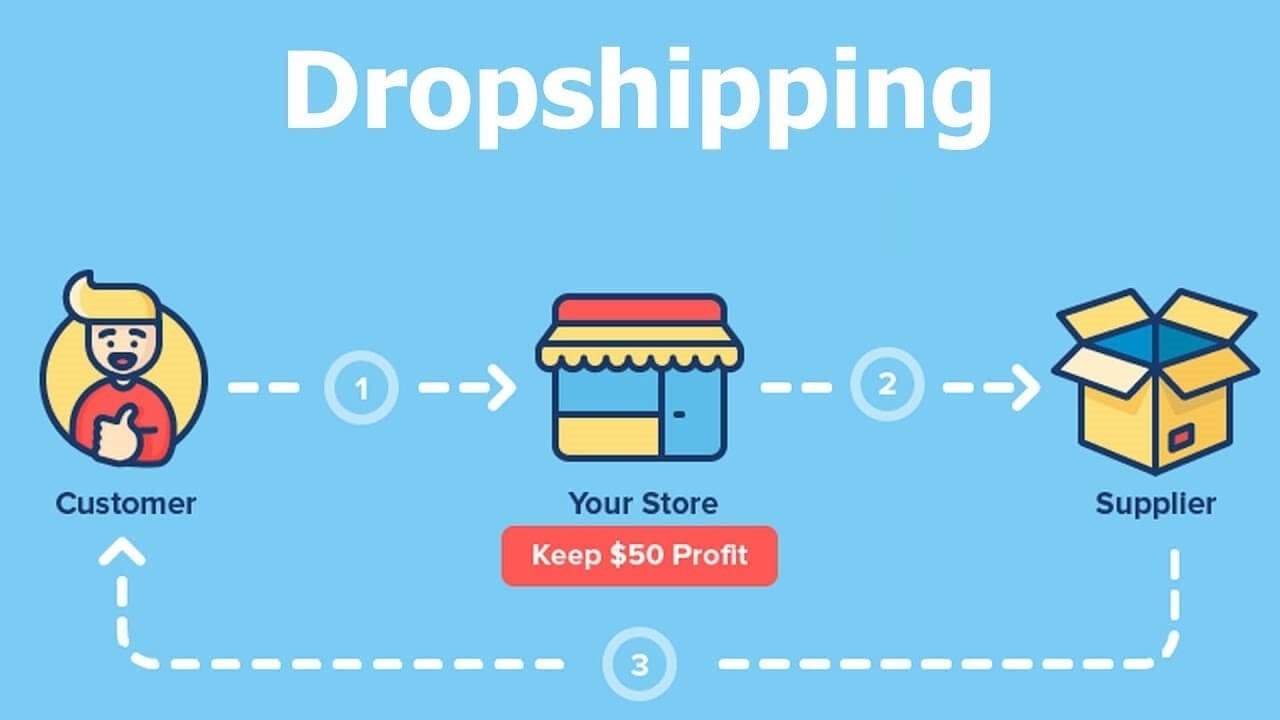Dear reader, If you found value from the regular editions, I would greatly appreciate it if you could share the newsletter with your network. You can click here to tweet about it.
This is Edition #15 of the newsletter. You can find the previous editions here. This is a special edition - I will dive deep directly into the business model.
Drop-Shipping
Dropshipping is a fulfillment model (typically in e-commerce) that allows a business to buy products from suppliers and ship them directly to its customers, without having to store any inventory or manufacture any product.
TLDR: an online shopify/amazon store that curates products from AliExpress and advertises to consumers. Any order made on this store is fulfilled directly by AliExpress. The consumer only interacts with the store.
Dropshipping businesses act as product curators, selecting the right mix of products to market to customers. They also incur customer support & marketing costs to help potential customers find, evaluate, and buy the right product.
With all of these costs to account for, dropshipping businesses mark up individual products. Dropshipping stores drive additional sales that the (AliExpress) supplier would have otherwise missed out on.
Customers are exposed to new products they wouldn’t find in their countries

From AliExpress to the United States
Remember watching (or buying from) any of these innovative product ads you see on Facebook/Instagram?

These are all products available for $1-$10 on AliExpress (which is a parallel to the Amazon for China) but sold by Drop Shippers in the United States/ Europe for $20-$50 (funnily showing the “discounted price” to be $25 from the “original” price like $50). An example of Fruit Infusion Water Bottle:

When a user in the US clicks on a Facebook ad run by the drop-shipping store and purchases the product from the store-front (say for USD 25), the store-front automatically places an order on AliExpress (for USD 4.23), which is fulfilled by the AliExpress merchant. The drop-shipping store receives ~USD 25 from the customer pays AliExpress ~USD 4 thus making ~USD 21 profit on this transaction. Ofcourse, there’s the cost of running ads to acquire the customers but when done at scale, you can make a lot of money with this arbitrage.
Benefits of Drop Shipping
Less capital is required
Easy to get started
Low overhead
Flexible location
Wide selection of products to sell
Easier to test
Easier to scale
Not a get-rich-quick scheme
The model sounds very easy isn’t it? What’s the catch?
Low margins
Low margins are the biggest disadvantage of operating in a highly competitive dropshipping vertical. Because it’s so easy to get started, and the overhead costs are so minimal, many competing stores will set up shop and sell items at rock-bottom prices in an attempt to grow revenue.Inventory issues
When you’re sourcing from multiple warehouses, which are also fulfilling orders for other merchants, inventory can change on a daily basis.Shipping complexities
Let’s say a customer places an order for three items, all of which are available only from separate suppliers. You’ll incur three separate shipping charges for sending each item to the customer.Supplier errors
Even the best dropshipping suppliers make mistakes fulfilling orders—mistakes for which you have to take responsibility and apologize.Limited customization and branding
Unlike custom-made products or print on demand, dropshipping doesn’t give you a lot of control over the product itself. Usually, the product dropshipped is designed and branded by the supplier.
Side Note: Apps that simplify the lives of drop shippers
Oberlo, a marketplace now acquired by Shopify, helps independent business owners find products to sell. With Oberlo, you can browse AliExpress and import the products that pique your interest directly to Oberlo—which is connected to your Shopify store—with the click of a button.
Once a customer buys a product, you’ll be able to fulfill their order in the Oberlo app. Fortunately, Oberlo automates this process. As the store owner, all you have to do is check that the details are correct and click the “‘order”’ button. The product is then sent directly from the AliExpress supplier to the customer—wherever in the world they may be.
Other Examples of Drop-Shipping
Print On Demand
Have a T-shirt design idea? You can start selling it online first and have suppliers like Printful or Printify take care of printing the t-shirts and delivering them. You collect fees from customers, pay the fixed price to the supplier, and earn the margin.
Have you tried drop-shipping? If so, I’d love to hear your thoughts.
I also post frequently on Twitter. For more such content, follow me on Twitter.
If you stumbled across this article and would like to subscribe to the newsletter, feel free to drop your e-mail here. No spam, promise!



